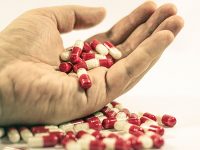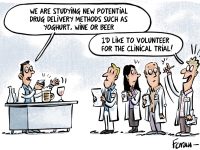Towards recovery
Therapeutic approaches to improve the treatment of alcohol use disorder
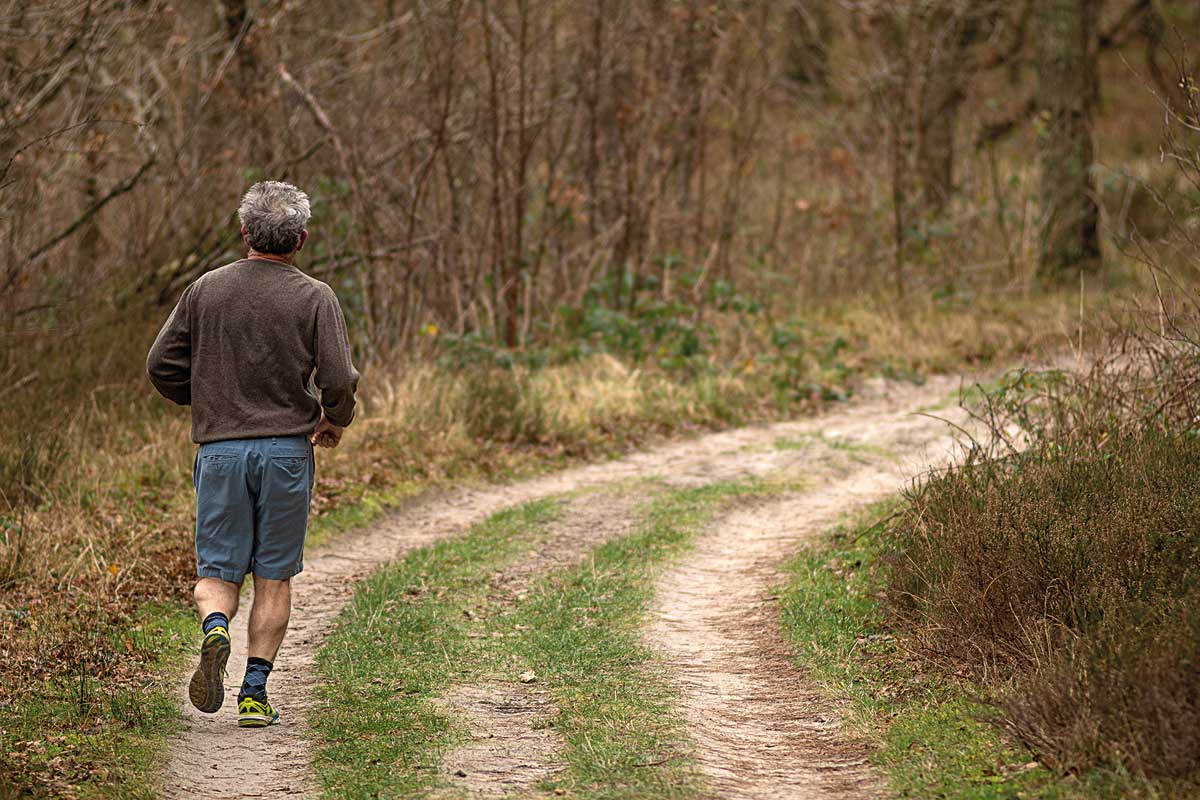
The best evidence-based treatments for alcohol dependence are currently those developed within multidisciplinary programmes based on a cognitive-behavioural approach, which include psychological, sociological, and medical dimensions. However, recovery is not always achieved. The percentage of individuals who abandon these programs and relapse is high throughout the whole process and an adequate state of wellbeing is not always found. This paper outlines some of the complements or techniques that could be incorporated into the most common treatments to enhance behavioural change while also considering long-term outcomes. Thus, the text highlights the importance of considering recovery as the culmination of the process of change towards improved health, wellbeing, and a self-directed life purpose, rather than just abstinence.
Keywords: alcohol use disorder, cognitive-behavioural therapy, motivation, inhibitory control, recovery.
Introduction
Addiction management requires a biopsychosocial approach, aimed at the well-being of the patient which also takes into account their individual, social, and biological characteristics. These models consider the recovery of alcohol-dependent individuals not only as the attainment of abstinence, but also as the culmination of a process of voluntarily sustained lifestyle change, leading to improvements in health, well-being, and self-direction of life purpose.
The complexity of this approach is derived from variability in the factors affecting the development of an addiction, which differ between individuals, such as their life experiences, neurobiological characteristics, and coping capacity. The fact that each person’s ability to resolve these aspects is different results in the high heterogeneity we find in daily clinical practice in terms of alcohol use disorder symptomatology, treatments, and levels of efficacy. Thus, there are multiple therapeutic approaches whose goals are set in relation to individual demand and variability but which often include interventions from pharmacological, cognitive-behavioural, or psychosocial approaches. The goals of these treatments often include providing dependent individuals with sufficient cognitive and behavioural skills to modify their problematic behaviours and reduce their risk of relapse, so that these changes become sustainable over time, either by maintaining abstinence or by reducing harm. However, the results obtained to date, although verified, are still relatively heterogeneous (Carroll & Kiluk, 2017). Pharmacological treatments or psychosocial approaches to alcohol abuse are widespread, however, this text will focus specifically on some of the issues relevant to the psychological approach to these disorders.
Psychotherapies for behavioural change
According to classical behavioural theories, a person starts using in the search for the positive reinforcement the substance provides; however, when dependence begins, the use is maintained through negative reinforcement (relief from discomfort), despite its harmful consequences.
This substance-behaviour relationship is mediated by cognitive, emotional, allostatic, and social processes, which interact and modify the person’s behaviour. Moreover, the influence of each particular aspect changes throughout the course of dependence. Thus, depending on which process is more extensively altered, therapeutic intervention will focus more on one aspect or the other and so, certain techniques will be preferred (Campbell et al., 2018). For example, in the initial stages of the detoxification process, pharmacological intervention is used to address withdrawal, while attentional or behavioural techniques focusing on behaviour modification are used to deal with craving. When there is an emotional imbalance, emotional recognition and regulation can also be useful techniques.
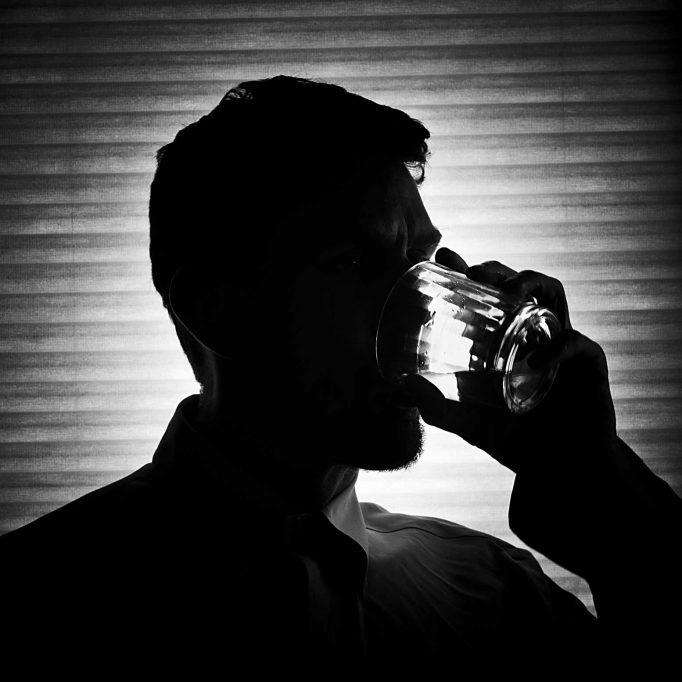
According to classical behavioural theories, a person starts using in the search for the positive reinforcement the substance provides. When dependence begins, the use is maintained through negative reinforcement (relief from discomfort), despite its harmful consequences for them and their environment. / Photo: David Goehring
Undoubtedly, the therapeutic process starts when there is a clear intention to change. This intention arises as a consequence of recognising the negative consequences of drug use and attempting to change the associated habits. To help the patient in this process, psychotherapeutic interventions seek to promote changes and achievements in different areas of a person’s life, thereby increasing motivation, improving coping skills, providing reinforcement alternatives, or promoting social support. For a comprehensive and detailed review of psychological interventions, see Cortés et al. (2018), which also provides information on the degree of evidence for each of the techniques and components reviewed.
Interventions based on changing motivation
The best known and most effective therapeutic programmes for alcohol dependence are those incorporating components from motivational interviewing, cognitive-behavioural techniques (such as coping or social skills training), or emotional regulation. These are often combined with some sessions specifically aimed at relapse prevention.
Motivation-for-change programmes, based on Prochaska and Diclemente’s (1986) transtheoretical model, promote intentional behavioural change. These authors proposed that, when contemplating behavioural change, an individual may go through a series of phases (stages of change): precontemplation, contemplation, preparation, action, and maintenance. The evolution of change is not linear and so the individual may go through the same phase several times during the process before being able to sustain significant change in a stable way. Thus, the individual actively moves through the phases and the therapist mixes different techniques to facilitate the desired change processes. These processes refer to the various activities of the individual as they move from one stage to another. For example, awareness raising, environmental and personal reappraisal (realising how unhealthy behaviours affect oneself and others), self-liberation (believing in one’s ability to change and committing to change), stimulus control or contingency management (reward or punishment to increase or decrease particular behaviours), and seeking supportive relationships. Moreover, the change each person requires can cover different levels or «layers of depth», including symptomatic/situational (pattern of consumption and micro- and macro-environmental factors), maladaptive cognitions (expectations, beliefs, and evaluations, etc.), current interpersonal conflicts (hostility and assertiveness, etc.), systemic/family conflicts (support networks and legal problems, etc.), and intrapersonal conflicts (self-esteem and personality, etc.). Considering this, the therapist uses different techniques that act at the level of required change in order to facilitate the person’s process of change and to progress along the motivational stages.
Throughout this process, relapse is considered to be another stage or a regression to a previous stage as the consequence of poor management of the problems that may arise once abstinence has been established. Experiencing negative conditions (emotions, interpersonal conflicts, and negative physical and physiological states) is the most frequent cause of relapse. In order to prevent this problem, the therapist and patient must try to identify which situations, thoughts, and affective states precede a potential episode and develop adaptive coping techniques such as assertiveness or social skills training. All of this involves training the person to identify and control the risk factors that may otherwise precipitate their drug use.
«The therapeutic process starts when there is a clear intention to change. This intention arises as a consequence of recognising the negative consequences of drug use»
The required change processes are not the same throughout the treatment. While awareness building or environmental reassessment are appropriate throughout the intervention, contingency management and stimulus control are useful during the action and maintenance stages. Consequently, therapeutic tools should be employed selectively; for example, psychoeducation would be appropriate for enhancing the awareness of a problem, stimulus control, or promoting social release, while assertiveness training may help enhance contingency management or counterconditioning and could be useful in relapse prevention.
Although the effectiveness of the interventions proposed in the previous paragraphs is well-documented, they do not guarantee therapeutic success and many patients experience a relapse during the first year. In fact, McQueen and his collaborators found that brief cognitive-behavioural interventions carried out in hospital (three or four sessions aimed at modifying beliefs or constructs associated with the problem as well as related loops) were moderately effective around six months into the treatment, but their effect disappeared after one year (McQueen et al., 2011). In contrast, motivational interventions (based on motivational interviewing) showed low short-term but significant long-term effectiveness (Smedslund et al., 2011). Beyond methodological reasons, therapeutic failure may be attributable to several factors such as the difficulty in self-regulating one’s emotions (fundamental in craving management), managing different sources of stress that can act as powerful triggers or potential risky situations, or individual inability to exert inhibitory control over consumption in these situations.
Emotional regulation in alcohol dependence
Emotions play a particularly important role, both in establishing dependence and in the recovery process. Individuals attain and become accustomed to a positive affective state associated with the consumption of the substance as they continue to use it. This gives rise to an opposing affective reaction which seeks to achieve emotional balance. The search for balance raises the emotional activation threshold and so everyday experiences cease to generate positive emotions; thus, only drug use can improve the person’s emotional status. Evidence that such emotional maladjustment may be related to relapse can be obtained by measuring a person’s startle reflex. The startle reflex is a reflexive muscle contraction of the facial muscles, triggered by a sudden intense stimulus. It is influenced by factors such as emotional state, attention, or mental activity, but is beyond voluntary control. Therefore, an affective modulation of the startle reflex can be used to assess the emotional valence of stimuli, i.e., whether the stimuli are considered by the individual as pleasant (positive valence) or unpleasant (aversive or negative valence).
The startle reflex will be greater with aversive stimuli and weaker when presented with pleasurable stimuli. It has been shown that consumption-related stimuli provoke an attenuated startle reflex, meaning that they have a very high positive valence, even after abstinence. So much so that these stimuli have been used as to predict relapse because having a very attenuated startle reflex in relation to alcohol before treatment is significantly related to the possibility of relapse after 12 weeks of intervention. That is, alcohol-dependent patients continue to assign an exceedingly high reinforcing value to alcohol, even after abstinence, which suggests that the appetitive valence system alteration remains even three months later (Jurado-Barba et al., 2015). Along the same lines, the affective modulation of the baseline startle reflex to alcohol can predict a dependent drinking pattern up to four years later. Moreover, people who were dependent afterwards seemed to show attenuated startle reflex levels at all valences, implying low psychophysiological reactivity, even to aversive stimuli, and thus providing evidence for emotional modulation difficulties (Jurado-Barba et al., 2017).
Thus, this type of result shows that emotional regulation training should be implemented in treatment to help patients to identify emotional states, respond adaptively to them, prevent relapse, and rebuild their reward systems.
Inhibitory control in alcohol dependence
Based on neuroscience models, several studies have proposed that neuromodulatory mechanisms are at the root of dependent behaviour and cause the brain’s reward system to become sensitised, thereby facilitating substance-approaching behaviour in the absence of adequate frontal inhibitory control. Thus, these mechanisms give rise to compulsive behaviour which, far from eliciting positive emotions, generate a negative emotional state. Dual models explain that this apparently irrational approaching behaviour can be stopped by setting up a goal-driven reflexive system, as long as the inhibitory capacity is preserved. Consequently, several researchers have proposed addressing some of the following implicit mechanisms regulating the reflexive/reactive balance during treatment: 1) attentional bias towards the substance; 2) formation of behavioural patterns associated with it; and 3) substance-triggered action tendencies. Work on these three cognitive mechanisms could equip patients with strategies to consolidate the changes made throughout the therapeutic process, thereby enabling them to use techniques acquired during therapy to help control the direction of their attentional resources. For example, through stimulus control (paying attention to other types of stimuli) or by avoiding risky situations (not entering bars). However, it could also help to generate an alternative behavioural pattern that can be activated in response to alcohol-related stimuli, for example, by engaging in an activity chosen specifically for the individual, such as going to a particular place.
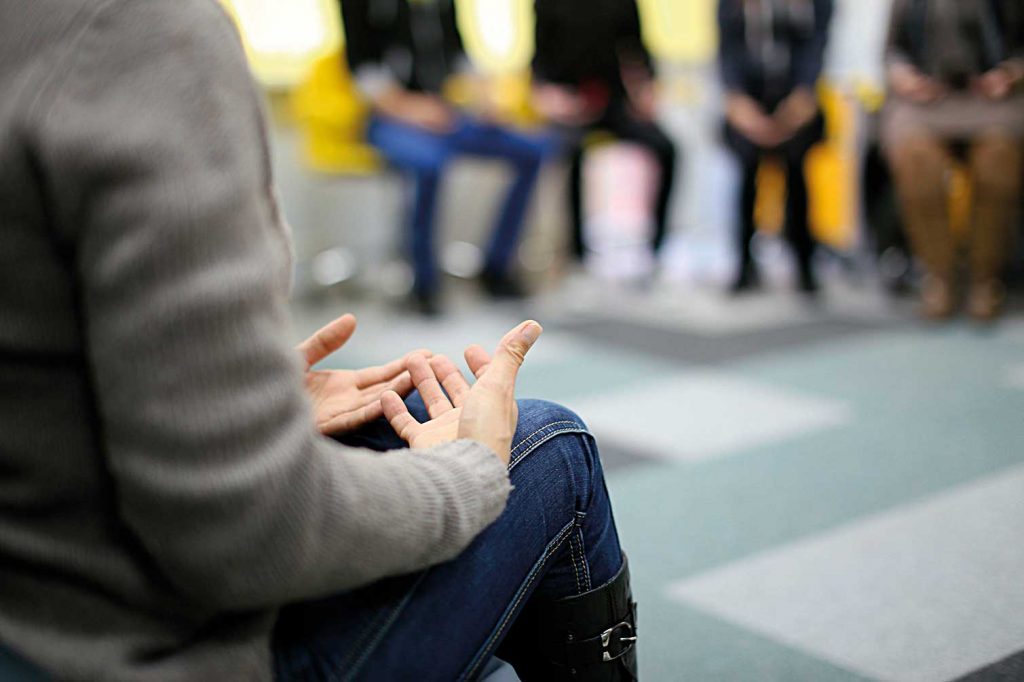
Participating in care programmes based on mutual help, community reinforcement, and collaboration with the healthcare system can be a path to recovery for individuals with alcohol use disorder. According to Rubio et al. (2018), the relapse rate for the participants in the Ayúdate-Ayúdanos programme created by FACOMA ranged from 29 to 38 %, while for those who do not participate in the programme it was 60–70 %./ Photo: Rudamese
Regarding the modification of action tendencies, Wiers et al. developed a training programme called the «alcohol approach/avoidance task» (A-AAT) to enhance the regulative capacity of the reflexive system. A-AAT involves generating avoidance tendencies in response to stimuli related to alcohol use (Wiers et al., 2011). Applying this therapeutic complement, they found that patients treated using this system reported fewer relapses and displayed neurofunctional changes one year later. They showed reduced activation of the amygdala and the medial prefrontal cortex, which decreased mesolimbic activity associated with craving. Therefore, these authors concluded that A-AAT increased the effects of the therapy. Furthermore, these functional changes correlated significantly with a reduction in behavioural substance-approaching tendencies (Wiers et al., 2015), which was interpreted as an improvement in the control of automatic behaviours.
«Emotions play a particularly important role both in establishing dependence and in the recovery process»
Furthermore, the effect of A-AAT could be enhanced when it was performed during activation of the consumption-related mnemic imprint. In other words, by activating the memory of consumption (and of all that it implies including the behavioural pattern, desire, etc.) and then inducing an avoidance behaviour, the behavioural pattern provoked by alcohol was counter-conditioned. Building on this, Martínez-Maldonado et al. (2020) exposed a group of alcohol-dependent patients to A-AAT training in the context of updating their mnemic imprint of alcohol consumption. To achieve this, after eight months of abstinence, patients received the A-AAT training after watching a neutral video or an alcohol-related video. After the intervention, only patients who had watched the alcohol video before the training showed post-treatment changes in their approach/avoidance tendency and pattern of alpha brain oscillations (8–12 Hz waves are related to cortical activation, alertness, and active inhibition mechanisms), which may be evidence of brain activity reorganisation. This suggests that avoidance training alone may not be sufficient to restore brain activity levels. Such training may need to be conducted in a context of updating consumption-related memories. Thus, exposure techniques connected to alternative-response planning could be particularly useful in strengthening inhibitory control. However, exposure techniques in the context of this pathology are not usually implemented because of the risks involved. To resolve this problem, virtual reality has been used to facilitate the implementation of exposure techniques – with response prevention, in safe environments, and with a level of activation and realism that can enhance the results and further generalise learned strategies – all with promising results.
Long-term recovery
The recovery process is particularly complex and ensuring its success requires understanding recovery as the attainment of wellbeing, beyond symptoms, i.e., a solutions-oriented approach, rather than a pathology-focused one. On this note, different definitions of this concept have been put forward by various organisations. Despite their subtle differences, they all agree that recovery is a process of voluntary (self-directed) change through which (physical and psychological) health, quality of life, and participation in society are maximised, leading to an improvement in the overall wellbeing of the individual (Kelly & Hoeppner, 2015).
Thus, although the new definitions include abstinence, this concept is not equated with recovery, which is a much more complex process requiring continuation in therapeutic programmes – almost from the beginning – and the involvement of other actors such as patient associations. To this end, four relevant areas should be reinforced: individual health (abstinence and the ability to make decisions that support physical and emotional well-being), home (a stable and safe place to live), purpose in life (meaningful daily activities), and community involvement (social networks and supportive relationships) (National Academies of Sciences, Engineering and Medicine, 2016). The Ayúdate-Ayúdanos (translated as “Help Yourself–Help Us”) programme was created with this goal in mind (FACOMA, 2016). It involves a continued care agenda based on mutual help, with community reinforcement in collaboration with the health-care system or the hospital environment. In this structure, patients undergo treatment for an average of six to seven years, using techniques tailored to their individual current situation, but with the ultimate goal of recovering in the sense described above. For the first two years, treatment takes place in the hospital setting, but from the outset patients are encouraged to engage with the programme where they receive support for themselves and their families. The programme promotes adopting a healthy lifestyle, which in turn fosters personal growth, recovery of values, and reinstatement of personal needs.
«Recovery is a process of voluntary change through which health, quality of life, and participation in society are maximised»
In more advanced stages of the therapeutic process, or during long-term stages after the beginning of abstinence, the use of techniques from positive psychology makes it possible to actively access a new life project. In the long term, this allows people to rebuild their self-images, self-esteem, accept both positive and negative emotions, and consequently achieve the physical and psychological wellbeing inherent to recovery.
The results of this approach show that, after two years of co-treatment, the number of cumulative months of abstinence is higher, the dropout rate decreases, anxiety levels are lower, and patients have an increased sense of purpose in life. In fact, the relapse rate for the peer support group ranged from 29 to 38 %, while for those who did not participate in the programme it was 60–70 % (Rubio et al., 2018).
Conclusions
An integrative treatment approach seems essential to achieve recovery or maintain abstinence in the long term. This involves sequencing and mixing techniques so that the characteristics of each stage can combine traditional management with the promotion of inhibitory control, emotional regulation, and the generation of new reinforcements. Techniques from positive psychology are used, which make it possible for values to grow, facilitating reconstruction of the individual and bringing them closer to the well-being that recovery entails. This biopsychosocial approach was able to promote long-term changes not only in behaviour and its associated cognitions, but also in the underlying neural mechanisms, thereby strengthening individual recovery.
References
Campbell, E. J., Lawrence, A. J., & Perry, C. J. (2018). New steps for treating alcohol use disorder. Psychopharmacology, 235(6), 1759–1773. https://doi.org/10.1007/s00213-018-4887-7
Carroll, K. M., & Kiluk, B. D. (2017). Cognitive behavioral interventions for alcohol and drug use disorders: Through the stage model and back again. Psychology of Addictive Behaviors, 31(8), 847–861. https://doi.org/10.1037/adb0000311
Cortés, M. T., Fernández, S., García, B., Martínez, V., & Sierra, R. (2018). Intervenciones psicológicas basadas en la evidencia en trastornos adictivos. In C. Pereiro & J. J. Fernández (Eds), Guía de adicciones para especialistas en formación. (p. 389–399). Socidrogalcohol.
FACOMA. (2016). Ayúdate-Ayúdanos. https://facoma.org/
Jurado-Barba, R., Duque, A., López-Trabada, J. R., Martínez-Gras, I., García-Gutiérrez, M. S., Navarrete, F., López-Muñoz, F., Jiménez-Airrero, M. A., Ávila, C., Manzanares, J., & Rubio, G. (2017). The modulation of the startle reflex as predictor of alcohol use disorders in a sample of heavy drinkers: A 4-year follow-up study. Alcohol Clinical and Experimental Research, 41(6), 1212–1219. https://doi.org/10.1111/acer.13399
Jurado-Barba, R., Rubio Valladolid, G., Martínez-Gras, I., Alvarez-Alonso, M. J., Ponce Alfaro, G., Fernández, A., Moratti, S., Heinz, A., & Jimenez-Arriero, M. A. (2015). Changes on the modulation of the startle reflex in alcohol-dependent patients after 12 weeks of a cognitive-behavioral intervention. European Addiction Research, 21(4), 195–203. https://doi.org/10.1159/000371723
Kelly, J. F., & Hoeppner B. B. (2015). A biaxial formulation of the recovery construct. Addiction Research & Theory, 23(1), 5–9. https://doi.org/10.3109/16066359.2014.930132
Martínez-Maldonado, A., Jurado-Barba, R., Sion, A., Domínguez-Centeno, I., Castillo-Parra, G., Prieto-Montalvo, J., & Rubio, G. (2020). Brain functional connectivity after cognitive-bias modification and behavioral changes in abstinent alcohol-use disorder patients. International Journal of Psychophysiology, 154, 46–58. https://doi.org/10.1016/j.ijpsycho.2019.10.004
McQueen, J., Howe, T. E., Allan, L., Mains, D., & Hardy, V. (2011). Brief interventions for heavy alcohol users admitted to general hospital wards. Cochrane Database of Systematic Reviews, 8, CD005191. https://doi.org/10.1002/14651858.CD005191.pub3
National Academies of Sciences, Engineering and Medicine. (2016). Measuring recovery from substance use or mental disorders: Workshop Summary. The National Academies Press. https://doi.org/10.17226/23589
Prochaska, J. O., & Diclemente, C. C. (1986). Toward a comprehensive model of change. In W. R. Miller, & N. Heather (Eds.), Treating addictive behaviors: Processes of change (p. 3–27). Plenum Press. https://doi.org/10.1007/978-1-4613-2191-0_1
Rubio, G., Marín, M., Arias, F., López-Trabada, J. R., Iribarren, M., Alfonso, S., Prieto, R., Blanco, A., Urosa, B., Montes, V., Jurado, R., Jiménez-Arriero, M., Á., & de Fonseca, F. R. (2018). Inclusion of alcoholic associations into a public treatment programme for alcoholism improves outcomes during the treatment and continuing care period: A 6-year experience. Alcohol and Alcoholism, 53(1), 78–88. https://doi.org/10.1093/alcalc/agx078
Smedslund, G., Berg, R. C., Hammerstrøm, K. T., Steiro, A., Leiknes, K. A., Dahl, H. M., & Karlsen, K. (2011). Motivational interviewing for substance abuse. Cochrane Database of Systematic Reviews, 5, CD008063. https://doi.org/10.1002/14651858.cd008063.pub2
Wiers, C. E., Stelzel, C., Gladwin, T. E., Park, S. Q., Pawelczack, S., Gawron, C. K., Stuke, H., Heinz, A., Wiers, R. W., Rinck, M., Lindenmeyer, J., Walter, H., & Bermpohl, F. (2015). Effects of cognitive bias modification training on neural alcohol cue reactivity in alcohol dependence. The American Journal of Psychiatry, 172(4), 335–343. https://doi.org/10.1176/appi.ajp.2014.13111495
Wiers, R. W., Eberl, C., Rinck, M., Becker, E. S., & Lindenmeyer, J. (2011). Retraining automatic action tendencies changes alcoholic patients’ approach bias for alcohol and improves treatment outcome. Psychological Science, 22(4), 490–497. https://doi.org/10.1177/0956797611400615
Funding
The research team received funding from the Carlos III Institute of Health (FIS15-00463, PI: Gabriel Rubio Valladolid), the Ministry of Economy and Competitiveness (TEC2012-38453-C04-04; PSI2045-68851-P; PI: Rosa Jurado Barba), and the National Drug Plan (2015/099, PI: Gabriel Rubio Valladolid).


